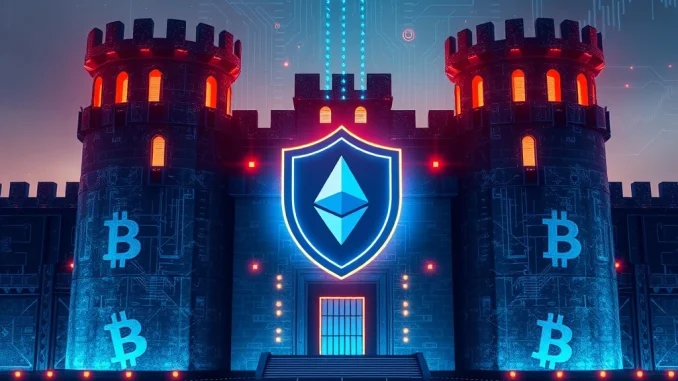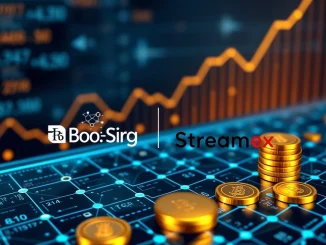
As the crypto market enters an exhilarating bullish phase in 2025, with Bitcoin soaring past $118,000 and Ethereum trading above $3,600, investors are witnessing renewed confidence and institutional adoption. This growth brings excitement, but also a critical focus on safeguarding assets. In this dynamic landscape, the demand for truly secure crypto exchanges has never been higher. Understanding which platforms prioritize your safety is key to navigating this prosperous yet evolving market.
Why Are Secure Crypto Exchanges More Critical Than Ever in 2025?
The lessons from past market volatility in 2023 and 2024 have underscored one undeniable truth: security is not a luxury, but a necessity. As digital assets gain mainstream acceptance, the sophistication of threats also increases. Investors, both retail and institutional, are seeking platforms that not only offer a wide range of services but also demonstrate an unwavering commitment to user protection and regulatory compliance. The emphasis on secure crypto exchanges has shifted from a mere feature to a core operational philosophy, shaping the industry’s future.
Leading the Charge: The Top Crypto Exchanges Prioritizing Your Safety
Amidst this heightened awareness, five exchanges have distinguished themselves through diverse and robust security strategies. They represent the forefront of digital asset protection, each bringing unique strengths to the table:
- KuCoin: A Fortress of Certifications
KuCoin has solidified its reputation with industry-leading certifications like SOC 2 Type II and ISO 27001:2022. Achieving a AAA security rating from CER.live further confirms its robust defenses. With a substantial $250 million insurance fund via BitGo and proactive regulatory steps, including a MiCA license application in the EU and a regulated subsidiary in Thailand, KuCoin demonstrates a clear commitment to global compliance. The appointment of BC Wong as CEO, formerly Chief Legal Officer, reinforces their focus on transparency and legal adherence, contributing to their impressive market growth in H1 2025. - Binance: Global Leader with Evolving Defenses
As the world’s largest exchange, Binance continues to enhance its security infrastructure. Features like the SAFU (Secure Asset Fund for Users) emergency reserves, multi-tier cold wallets, and real-time surveillance are central to their strategy. Their public “5-step safety plan” even addresses broader security concerns like crypto-related kidnappings. While acknowledging past sector-wide data breaches, Binance attributes these to external factors and emphasizes continuous upgrades, including necessary pauses for maintenance on chains like BNB Smart Chain. Regulatory scrutiny, particularly in regions like France, remains an ongoing focus. - BTCC: Longevity Meets Innovation
Founded in 2011 and now based in the UK, BTCC leverages its extensive operational history to build trust. The exchange has expanded its tokenized futures offerings and received three FXEmpire recognitions in 2025, highlighting its market standing. By providing advanced tools such as zero-fee trades and multiple funding options, BTCC serves both institutional and retail clients while maintaining a strong focus on stability and innovation in its security protocols. - Bitget: Transparency Through Proof-of-Reserves
Bitget emphasizes transparency through regular proof-of-reserves snapshots and frequent internal audits. Its security framework is bolstered by multi-signature cold storage and customizable withdrawal whitelists. High uptime and rapid incident response protocols underscore its operational reliability. Though not as large as some top-tier platforms, Bitget’s proactive approach to security and transparency has carved out a strong position in a competitive market. - Bybit: Resilience and Recovery
After recovering from an early breach, Bybit has made significant investments in infrastructure resilience. Post-hack initiatives include rigorous third-party audits, enhanced KYC protocols, and a robust bug bounty program that attracts global security researchers. Their swift asset redemption following the breach demonstrated Bybit’s commitment to user safety and transparency, rebuilding trust through decisive action.
Enhancing Crypto Security: Beyond the Basics
The industry’s collective focus on crypto security is reshaping operational priorities. What was once considered advanced is now becoming standard practice. Third-party security audits, comprehensive insurance programs, and proactive compliance efforts are integral, reflecting crucial lessons learned from market failures in previous years. Exchanges are now diversifying their defenses against sophisticated threats like 51% attacks and access control failures. The adoption of AI-driven threat detection systems is gaining traction, alongside extensive user education campaigns designed to mitigate vulnerabilities stemming from human error. The 2025 Blockchain Security Report further underscores these evolving risks, prompting platforms to adopt layered security models for comprehensive protection.
Navigating the Market: How Crypto Trading Security Shapes Your Investment Journey
For investors, the level of crypto trading security offered by an exchange directly impacts confidence and, by extension, market liquidity and growth. The competitive drive among platforms towards risk mitigation is evident in their investments. For instance, KuCoin’s $2 billion user protection initiatives and ISO 27001 certification exemplify a broader trend toward institutional-grade security. Binance’s strategic hardware wallet partnerships and Kraken’s reported $150 million insurance fund (as noted in broader industry reports) further illustrate this sector-wide shift toward proactive asset safeguarding. Platforms that prioritize robust security measures are often those that attract and retain a loyal user base, fostering a healthier and more sustainable market environment.
Choosing the Best Crypto Exchanges for Your Portfolio
Selecting the best crypto exchanges for your investment portfolio requires careful consideration beyond just trading fees or asset variety. Look for platforms that openly share their security audits, provide details on insurance funds, and demonstrate clear regulatory compliance. Transparency, such as proof-of-reserves, should be a key factor in your decision-making process. The maturing crypto industry is increasingly finding a balance where security and scalability are no longer conflicting priorities but complementary aspects of a robust trading environment. Platforms like Binance, with its dominance in liquidity, and others like Bitget and Bybit, which carve niche markets by balancing privacy, compliance, and innovation, exemplify this trend.
In conclusion, as the crypto market surges in 2025, the commitment of exchanges to fortifying their security infrastructure is paramount. The leading platforms are not just reacting to threats but proactively building more resilient, compliant, and transparent environments. For investors, choosing a platform that champions security is not just about protecting assets; it’s about participating confidently in the exciting future of digital finance.
Frequently Asked Questions (FAQs)
What makes a crypto exchange truly secure?
A truly secure crypto exchange employs a multi-layered approach including cold storage for the majority of assets, multi-signature wallets, two-factor authentication (2FA), regular third-party security audits, insurance funds, and robust compliance with global regulations like MiCA. Transparency, such as proof-of-reserves, also builds trust.
Why is crypto security so important in a bullish market like 2025?
In a bullish market, rising asset values make exchanges more attractive targets for cyberattacks. Increased trading volume and new investor onboarding also necessitate stronger security to protect a larger user base and prevent scams, ensuring sustained market confidence and growth.
Do all top crypto exchanges have insurance funds for user assets?
While not universally mandatory, many leading exchanges, including KuCoin (with BitGo insurance) and Binance (with its SAFU fund), have established significant insurance funds. These funds are designed to protect user assets in the event of a breach or system failure, offering an additional layer of security and peace of mind.
How can I personally enhance my crypto trading security?
Beyond choosing a secure exchange, personal security practices are crucial. Always enable 2FA, use strong unique passwords, be wary of phishing attempts, keep your software updated, and consider hardware wallets for long-term storage of significant assets. Never share your private keys.
What is MiCA compliance and why is it important for exchanges?
MiCA (Markets in Crypto-Assets) is a comprehensive regulatory framework in the European Union designed to bring clarity and oversight to the crypto market. For exchanges, MiCA compliance means adhering to strict rules regarding consumer protection, market integrity, and operational resilience. It’s important because it signals a platform’s commitment to regulatory alignment and fosters trust among users in regulated markets.
Are AI-driven security measures common in crypto exchanges?
AI-driven security measures are becoming increasingly common. Exchanges are leveraging AI for real-time threat detection, anomaly detection in transaction patterns, and identifying suspicious login attempts. This technology helps platforms proactively defend against evolving cyber threats and improve their overall security posture.



